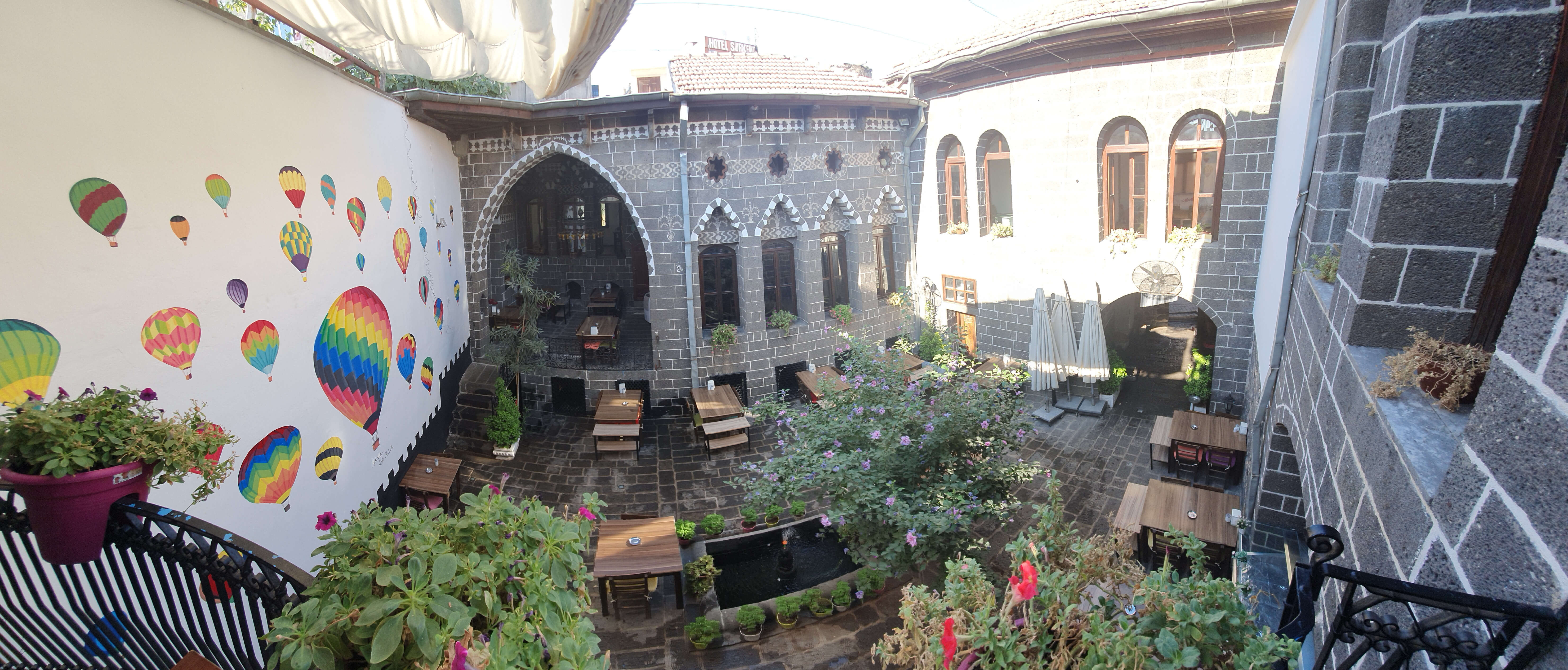Traditional Diyarbakir Courtyard House
This interactive image shows an example of an ecological traditional Diyarbakir courtyard house.
Move your mouse to get detailed information on the different sections. From this point on, I will refer to Diyarbakir by its authentic Kurdish name: Amed.
This historic courtyard house has been re-purposed into a breakfast restaurant / cafe (İçkale Kahvaltı & Cafe Muharrem Erim Diyarbakır Evi). This house is located within the City Walls of the Old Town (Sur District), in the Cevetpasa neighborhood. This neighborhood is located in the Old Town's most North-Eastern section and borders the Inner Castle (İçkale).
There are four common courtyard building types in Amed, namely "Inner Courtyard Plan", "L-Type Plan", "U-Type Plan" and "Central Courtyard Plan". The house in question is of the U-Type Plan and has dedicated winter, summer, and seasonal sections.
The winter section is located in the north (on this image): it is the section with the Iwan.
The seasonal section connects the winter and summer sections and is on the east. This section faces the alley; visitors enter the house via this section.
The summer section is on the south and has a balcony. I took this photo from the balcony.

Iwan
An iwan is a rectangular hall or space, usually vaulted, walled on three sides, with one end entirely open. The formal gateway to the iwan is called pishtaq, a Persian term for a portal projecting from the facade of a building. Since the definition allows for some interpretation, the overall forms and characteristics can vary greatly in terms of scale, material, or decoration. Iwans are most commonly associated with Islamic architecture; however, the form is Iranian in origin and was invented much earlier and fully developed in Mesopotamia around the third century CE, during the Parthian period. The Parthians were an ancient nation whom are among the ancestors of the Kurds. The modern Kurdish language is a descendant of the Parthian language; both are North-Western Iranian languages. Iwans can be found in most historic Kurdish cities and can differ greatly in style. In Diyarbakir, the Iwan is usually located in the winter section of the traditional courtyard house.
Basement
Fountain
Click on the link below to view a short clip of an active fountain in a traditional Diyarbakir courtyard house. The video was shot in a different historic house; it is not the fountain pictured in this interactive image. For reference only.